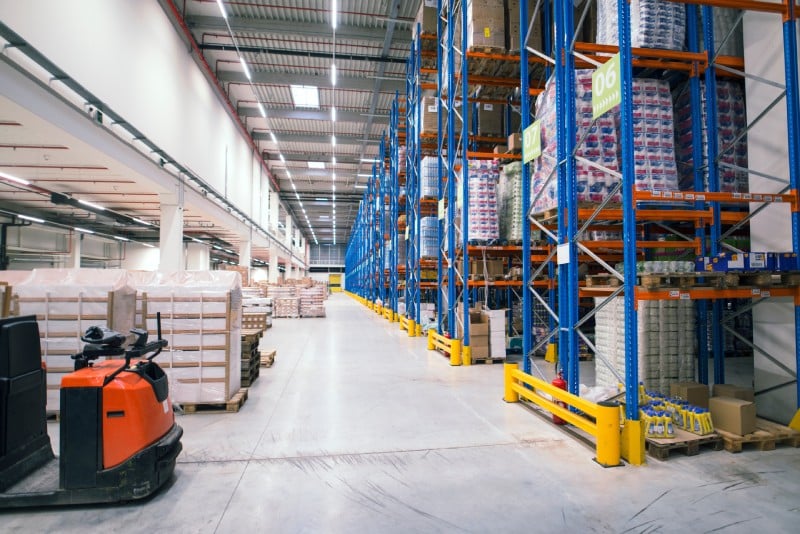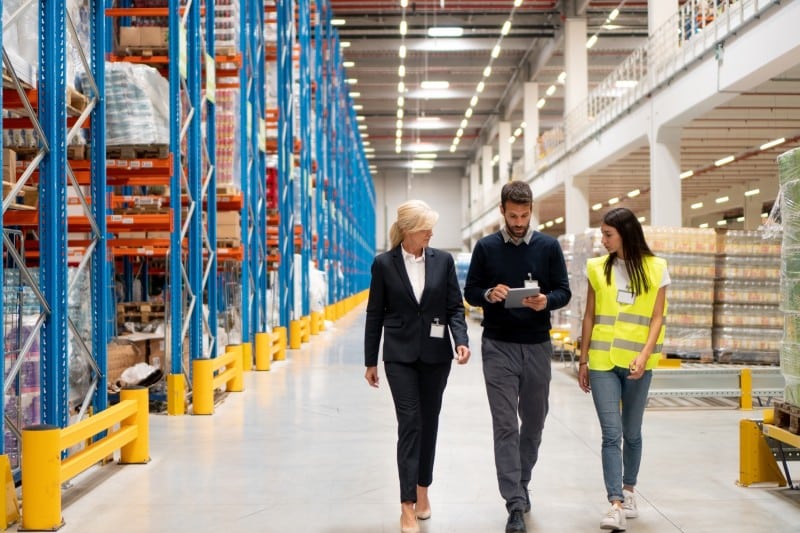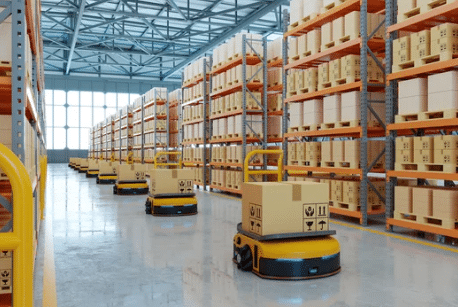Fast, accurate shipping is no longer a competitive advantage; it’s the expectation. Thanks to the “Amazon effect,” consumers and businesses alike demand same-day or next-day delivery, with full transparency along the way. For warehouses and distribution centers, that means optimizing every stage of operations, from order processing and material handling to packaging and final-mile delivery.
But improving efficiency doesn’t mean just working faster. It requires smarter processes, better space utilization, and the right material handling solutions to keep up with the demands of modern e-commerce.
In this guide, we’ll explore how e-commerce is reshaping supply chain operations, key strategies to improve your shipping processes, and how technologies like vertical reciprocating conveyors (VRCs) are helping distribution centers maximize velocity and stay competitive.

The Rise of E-Commerce and Its Impact on Warehousing
E-commerce has fundamentally changed how distribution centers operate. Henry Maier, former president and CEO of FedEx, once said: “[E-commerce] is bringing unparalleled and unprecedented growth and a landscape of continuing change.” That statement still holds true in 2025.
Here are some of the most notable ways e-commerce is impacting distribution centers today:
- Competition for space: With fulfillment centers driving much of the demand for industrial real estate, vacancy rates remain tight, and rental costs are high. Expanding facilities outward isn’t always feasible, forcing operators to get creative with existing footprints.
- Need for efficient layouts: Warehouses now require high clearances for multi-level systems, cross-dock configurations for faster throughput, and more loading docks to handle increased volume.
- Shorter shipping routes: To meet same-day or next-day delivery requirements, many companies are locating facilities closer to urban hubs. Shorter trips and more frequent stops have become the norm.
- Workforce pressures: Demand for logistics staff continues to grow, but there’s a shortage of skilled transportation and warehouse workers. Ongoing training is essential to bridge the gap.
- Free shipping pressure: While customers see it as a perk, “free” shipping still costs the business. Companies must find ways to absorb or offset these costs through efficiency gains.
Looking ahead to 2025 and beyond, expect to see continued investment in automation, robotics, and AI-driven forecasting as companies seek to balance speed, accuracy, and cost in this evolving landscape.
Key Strategies to Improve Shipping Processes
Simplify Your Processes
Improve Communication with Employees
Minimize Product Damage
In-transit damage is one of the quickest ways to lose customer trust. Double-wrapping pallets, using secure strapping, and optimizing packaging can significantly reduce the risk of broken or damaged products.
Double-Check for Accuracy
Accuracy is everything in shipping. Verify pallets are packed correctly and load delivery vehicles in order of their routes to minimize mistakes. Including an invoice copy with each load gives drivers an easy way to confirm details.
Keep Customers Informed

Maximizing Distribution Center Velocity
Continuously Improve Processes
Take Advantage of Overhead Space
One of the most effective ways to increase throughput without expanding outward is to expand upward. Installing a vertical reciprocating conveyor (VRC) gives you a safe and efficient way to move materials between levels while freeing forklifts for other tasks.
Benefits of VRCs include:
- Safe, enclosed transport of materials between two or more levels.
- Compatibility with pick modules, mezzanines, conveyors, AGVs, and AMRs.
- Ability to operate 24/7 with minimal training.
- Lower installation and maintenance costs compared to freight elevators.
Move Closer to Your Customers
Partner with Third-Party Logistics Providers (3PLs)
Leverage Real-Time Data
Avoid backorders by investing in systems that provide real-time visibility into inventory and buying trends. Data-driven decision-making ensures the right products are in the right place at the right time.
Material Handling Solutions for the E-Commerce Era
- Vertical Reciprocating Conveyors (VRCs): Essential for multi-level facilities, helping you maximize vertical space safely and cost-effectively.
- Conveyor integration: Pairing VRCs with horizontal conveyors creates seamless material flow across multiple floors.
- Automation and robotics: Automated guided vehicles (AGVs), autonomous mobile robots (AMRs), and robotic pick systems reduce labor strain and speed fulfillment.
- Training and workforce development: Ensuring staff are well-trained on both equipment and processes helps close labor gaps and minimizes errors.

Future Trends Shaping Distribution Centers in 2026 and Beyond
The distribution landscape will only continue to evolve. Key trends to watch include:
- Robotics and automation: Expect more distribution centers to deploy robotic picking and autonomous vehicles for faster throughput.
- AI-powered demand forecasting: Predictive analytics will help companies balance inventory across multiple facilities.
- Sustainability initiatives: Energy-efficient warehouses, green packaging, and carbon reduction strategies are becoming priorities.
- Micro-fulfillment centers: Urban warehouses designed for last-mile delivery will play a bigger role in reducing shipping times.
Partner with PFlow to Optimize Your Warehouse
E-commerce has redefined what it takes to run a successful warehouse or distribution center. To stay competitive, companies must combine streamlined shipping processes, data-driven decision-making, and advanced material handling solutions.
By investing in the right tools—like PFlow’s VRCs—and adopting forward-looking strategies, your facility can keep up with rising consumer expectations while reducing costs and increasing efficiency.
Ready to optimize your distribution center? Contact PFlow Industries today to learn how our VRC solutions can improve your material handling operations.
